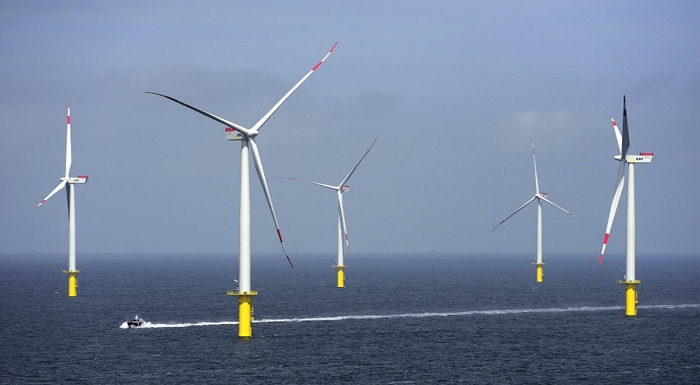Safety for people and equipment in the offshore wind industry


The need for renewable energy is vastly growing worldwide. Wind energy is expected to take the greatest share of this electricity with at least 21%.
The rapid growth of wind energy brings along some challenges to the safety of people and equipment. In this article, I will outline the greatest challenges and their solutions.
In order to stimulate the growth of clean energy, the European Union set a legally binding target to 2030 of at least 27% renewable energy in final energy consumption at European level. According to the European Commission this means that 46%-49% of electricity should be generated by renewables.
This growth goes hand in hand with evolving safety solutions for people and equipment in the offshore wind industry.
Offshore wind energy safety challenges
There are several difficulties to consider with regards to safety for people and equipment on offshore wind structures such as substation platforms and wind turbines. These challenges are:
- Remoteness of the sites;
- Presence of generator (fire risk);
- High tides and salt water;
- Prevailing sea and weather conditions.
The remoteness of the sites make the evacuation process more complex. Although substation platforms and wind turbines are predominantly unmanned, during maintenance and repair activities people are present who are in need of protection during hazardous events. The presence of the generator on substation platform can cause such an event. The safety risks posed by a generator include fire outbreaks, CO2 emissions and explosions.
Hight tides, salt water and severe weather conditions can be challenging to the offshore wind structure. Such conditions can lead to corrosion of metals and an high impact of high tides on the structure. The structure components also need to be able to withstand the strengths of offshore winds, which can be really harsh.
Offshore wind energy safety solutions
Before emergency services can be on site during a hazardous event, people need to be protected by the structural integrity of the structure. Generally, a structure is strengthened by its fire and blast resistant components such as doors, walls and windows. Especially on offshore sites, these components can withstand high loads, fires and explosions for 2 hours. In this way, emergency services have enough time to arrive at the site and evacuate all people present.
As mentioned before, the generator is an element of safety risk on substation platforms. During the operation of the generator, the surface of the engine can have extremely high temperatures. When fluids, such as diesel fuel and engine oil leak or spray onto hot surfaces, it can cause a severe fire. Especially when oxygen is present from heavy ventilation and open damper to promote air flow, you have a very high risk situation. The area where generators are present are required to be adequately rated for fire according to the risk level. Fire and blast rated doors, walls and windows should be applied in such rooms to protect the equipment and, if present, the people in the adjacent rooms.
Offshore weather conditions can be hard for the structure. Corrosion due to salt water, for instance, can lead to damage and failure of the structure and even on-site accidents. Besides providing protection against fires and explosion, architectural component should also be corrosion resistant. Other important properties are:
- Weather tightness: to protect against severe weather conditions;
- Gas tightness: to protect against gas emission from e.g. generators;
- Wind resistance: to protect against harsh offshore winds.
Basically, architectural components such as fire and blast rated doors, walls and windows are a significant factor in providing safety for people and equipment in the offshore wind industry. Next to providing safety against fire and blast events, they also ensure that daily operations can withstand severe weather conditions.
Take a look at our wind industry overview which includes interesting wind projects and more!






